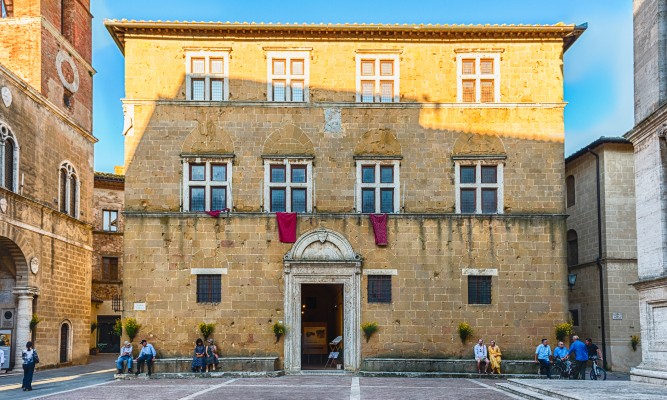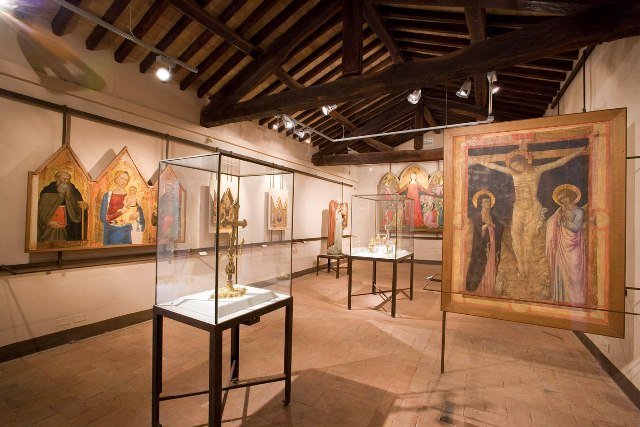
Palazzo Borgia – ©iStockphoto

Jewels of the Val d’Orcia: The Diocesan Museum in Pienza (June 11th)
When you visit Pienza, if you have even the slightest interest in classical arts, you owe it to yourself to visit the Diocesan Museum, housed in the Episcopal Palace (Palazzo Borgia), which forms a part of the grand architectural ensemble with the Piazza and the Cathedral. This area is the heart of Pienza’s transformative renovation initiated by the humanist Pope Pius II Piccolomini and brought to life by architect Bernardo Rossellino.
Originally the museum was conceived as a repository for the Cathedral’s treasures, but it has grown to encompass a rich collection from various churches throughout the region. It is organized into 11 rooms that showcase a wealth of art from Pienza and neighbouring towns.
Most notable within the collection are remarkable examples of 14th-century Sienese paintings. Among these is Pietro Lorenzetti’s renowned “Madonna of Monticchiello” (beautiful!) and Bartolo di Fredi’s large panel, the “Madonna della Misericordia,” once displayed in Pienza’s Baptistry. The 15th-century Sienese School is also well represented, featuring exquisite works like Il Vecchietta’s “Madonna on a Throne between St. Blaise, St. John the Baptist, St. Nicholas, and St. Florian.” This piece highlights the clear, bright aesthetic and perspective techniques influenced by Florentine art.
The museum also showcases the 16th-century “Madonna of Mercy” by Luca Signorelli and Renaissance sculptures by Domenico di Niccolò dei Cori and subsequent Sienese artists, such as Vincenzo Rustici, Francesco Rustici, and Bernardino Mei.
A standout within the museum is its collection of goldwork, spanning from the 13th to the 19th century. Particularly significant are the liturgical furnishings gifted to the Cathedral by Pius II.
Among all the many museum’s treasures, the Cope of Pius II holds a place of high esteem. This ecclesiastical garment, adorned with twenty-seven scenes from the Virgin Mary’s life, was initially a gift from despot Tommaso Paleologo to Pope Pius II, who then bequeathed it to the Cathedral. Crafted in England, the cope reflects the refined tastes and influential legacy of Pius II, the foremost figure in Pienza’s history.
The best moment to visit Val d’Orcia is now.
